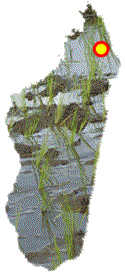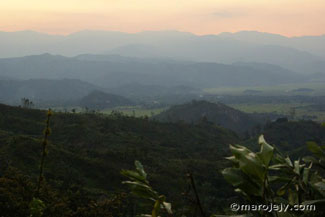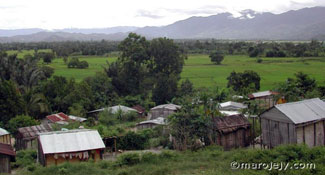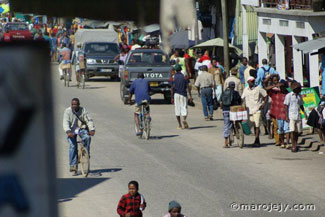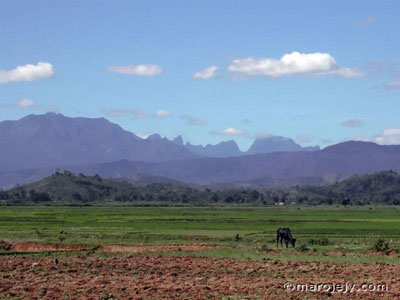 |
|||||
|
"The town itself is one of my favourite in Madagascar. The relative wealth of the area shows in the goods available in the many shops, but because it sees relatively few tourists – and only the very best sort: those willing to hike up steep slopes in pouring rain – the people are exceptionally friendly and easygoing. It is also wonderfully compact, which comes as a relief after straggly Sambava, and cool. Even if you are not doing the major trek in Marojejy ... there are numerous wonderful walks in the area." Hilary Bradt – Madagascar Guide – Bradt Guides – 9th edition – 2007
What could be a better introduction to Andapa? – especially coming from someone like Hilary Bradt, who has traveled widely in Madagascar for over thirty years, who knows the island intimately, and who loves it with a passion. The town of Andapa is situated in the northeastern region of Madagascar called SAVA (an acronym for the area's four principle towns: Sambava, Antalaha, Vohémar and Andapa). Andapa lies in a broad, flat valley – basically a basin – surrounded on all sides by high mountains. Transformed over the ages from a huge lake into swamplands filled with rich sediments from the runoff of the surrounding mountain rainforests, the Andapa Basin was a fertile land when the first humans arrived in the nineteenth century. These first settlers were people fleeing from the persecution of the Merina people of Madagascar's central highlands. Over the past two hundred years, people from all the different ethnicities of Madagascar have immigrated into the Andapa area – and all have benefited from the incredible richness of Andapa's soils. Andapa has become the "rice bowl" or "rice granary" of northeastern Madagascar, the Basin transformed into vast, lush fields of rice. As the population has increased, the original tiny hamlets have grown and formed a web of villages interspersed all through these rice fields.
Andapa is a serene and peaceful place, a small and wonderful world where the people still maintain a simple and harmonious lifestyle. For the visitor, it is a place of both contemplation and discovery. Blessed by an abundance of water funneled from the surrounding mountains, Andapa is a symbol of life and hope for sustainable development in Madagascar. It is regions like this that will help Madagascar gain food independence, and towards this goal the World Bank is financing a large project to rehabilitate the network of irrigation canals that water the rice fields of the Basin. A small hydroelectric dam (4–7 MW) is also planned for construction in the near future where the Lokoho River exits the Basin. This will help reduce dependence on expensive foreign oil imports and alleviate some of the energy problems experienced not only in Andapa but also in the town of Sambava and several key villages in between.
For the visitor, perhaps the greatest attraction of the Andapa region is its extraordinary and spectacular natural environment. While much of the original forest cover has succumbed to the very deeply rooted tradition of slash-and-burn agriculture, several large protected areas have been set aside to preserve the magnificent virgin rainforests of the area. These include Marojejy National Park, Anjanaharibe-Sud Special Reserve, the Betaolana Corridor, and the large Makira Project further to the south. Each of these areas protect some of the most astonishing and diverse assemblages of life found anywhere on Earth, and a visit is like stepping back into a prehistoric time, into an Eden with every imaginable sort of plant and creature. In these pages, you will discover the world of Andapa – the basin, the mountains, the rice fields, and the people. We wish you a very warm welcome, with the hope that this "virtual visit" will lead you one day to a "real visit." Only then, when you experience Andapa first-hand, will you truly know the beauty of its countryside, the kindness of its people, and the serenity of its way of life.
|
||||
